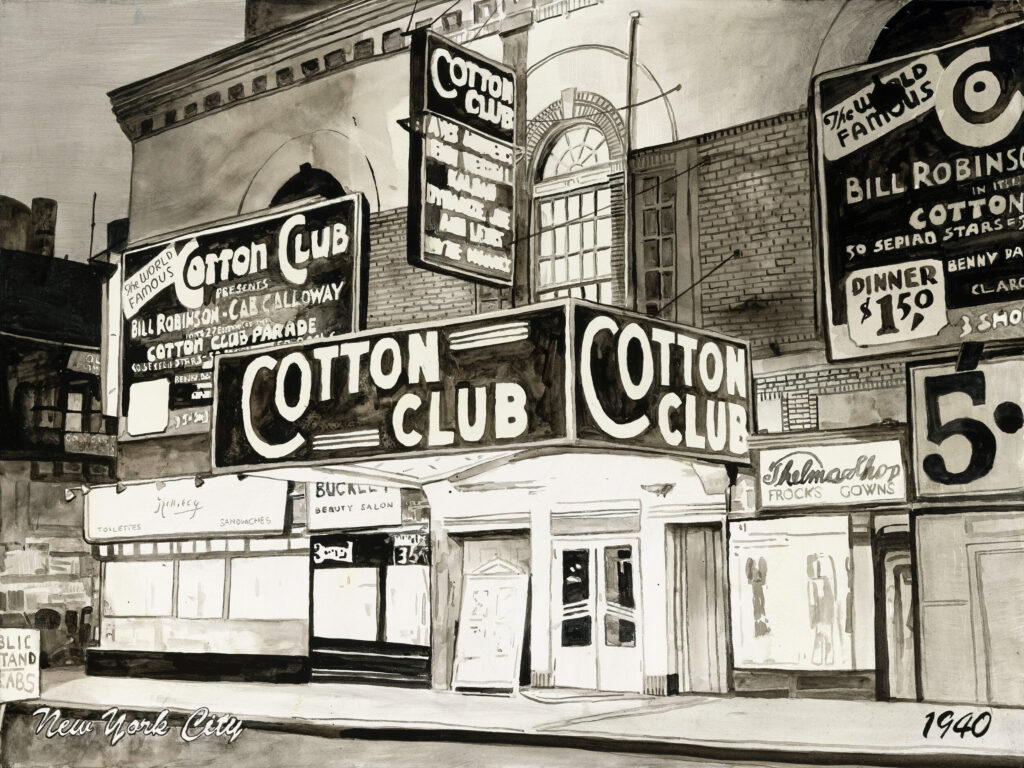New York, NY, USA
Closed 1940

The Disappointed Tourist: Cotton Club, Ellen Harvey, 2021. Oil and acrylic on Gessoboard, 18 x 24″ (46 x 61 cm). Photograph: Etienne Frossard.
The original Cotton Club was a famous and influential New York nightclub that operated in Harlem from 1923 to 1936 and in the midtown theater district from 1936 to 1940. The club was founded by Owney Madden, a prominent white bootlegger, as a venue in which to sell his beer during Prohibition and to provide what he referred to as “an authentic black entertainment to a wealthy, whites-only audience.” The space had previously housed another club owned by the Black heavyweight boxing champion Jack Johnson, who stayed on as manager of the new club. Despite featuring and promoting many of the most famous Black performers of the time, most notably Duke Ellington, the Nicholas Brothers, Adelaide Hall, Cab Calloway, Ethel Waters, Lena Horne, Bill “Bojangles” Robinson, among many others, the club initially had a whites-only policy for patrons, with a few exceptions for Black celebrities. Chorus girls were also required to be “tall, tan and terrific”, ie. at least 5’6”, light-skinned and under 21. The club’s decor included many racist tropes, depicting Black people as exotic savages or plantation “darkies.” Langston Hughes called it “a Jim Crow club for gangsters and monied whites” and felt that despite the high salaries commanded by the club’s performers, they were stared at by the white customers “like amusing animals in the zoo.” Carl Van Vechten called for a boycott for its racist entry policies. The club closed in 1936 following the Harlem race riots of the previous year and reopened in the midtown theater district until 1940 when federal investigation into tax evasion by the owners, rent increases and changes in taste led to its closure. A new Cotton Club was opened in 1978 in Harlem and is still operating. The painting is based on an old photograph from Science History/Alamy.
I chose the Cotton Club because my mother’s family were part of the Harlem Renaissance and because its dynamic cultural impact, while at times problematic, can still be seen and heard everywhere today. Anon.